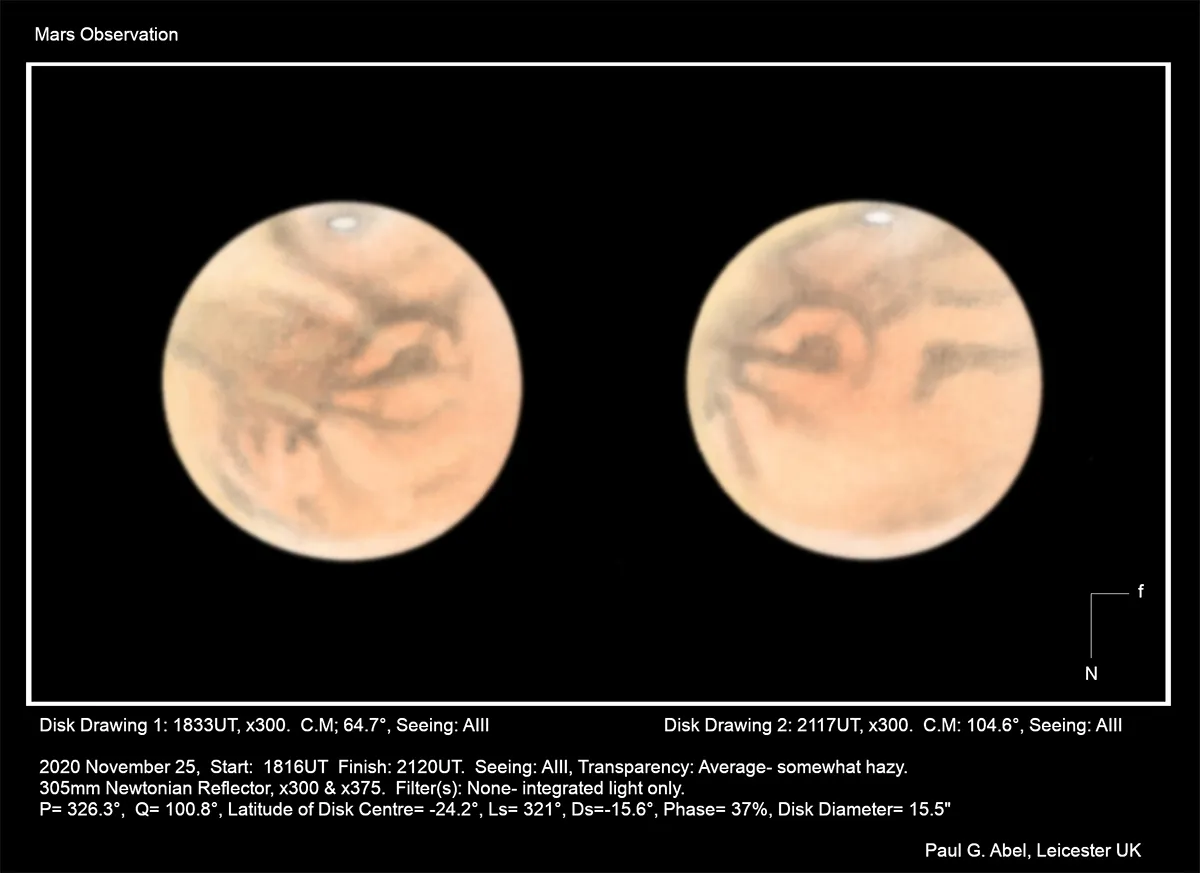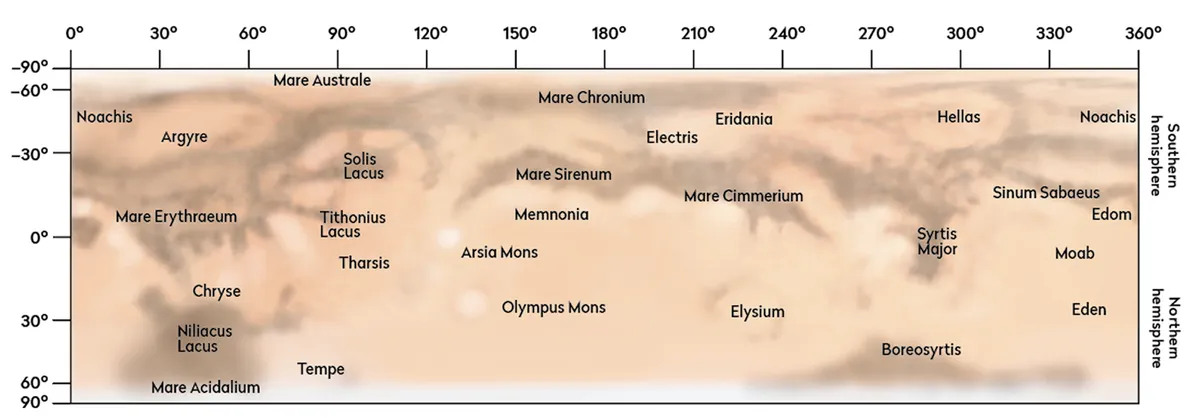Mars is a fantastic object through a telescope. By continually observing the Red Planet and making sketches or drawings of what you see, you'll get to know the Martian features in no time at all.
And if you record the date and time of your drawings, you'll also build up a scientific record of its changing typography.
Mars reaches opposition on 8 December 2022, which means that now is a great time to observe and sketch the Red Planet, as it gets better and better as we head towards the end of the year.
Start sketching the Red Planet long before opposition and it won’t be long before you have drawings of the entire surface.
Follow these 5 simple steps and get sketching!
If you don't have a telescope, read our guide to the best telescopes for beginners

5 steps for drawing Mars
- First, you’ll need to make a blank to draw on. Download the BBC Sky at Night Magazine Mars observing form or make your own by drawing a white circle 50mm in diameter.
- Spend a good 15 minutes observing Mars at your telescope before starting. What details are visible? Can you see a polar cap? Are there any prominent dark markings? What else can you see? Experiment with magnification so that the features are not too blurred.
- You’re ready to draw. Start by putting in the terminator. Near opposition, Mars is 100% illuminated, but either side of opposition, the planet has a phase. The terminator is not necessarily at right angles to the central meridian, so draw it carefully.
- Now add the most prominent dark features, then the polar cap if you can see it. Add subtle features like clouds or delicate streaks. The Martian limb may be quite bright if clouds are present. Complete your drawing within 12 minutes: any longer and Mars’s rotation will have significantly moved the features.
- Finally, record the date, time (in UT) and telescope size and details. You can add other data like the value of the central meridian: this tells you which feature is on the north–south line at the time of your drawing.

Now try this
Once you’re comfortable sketching the Martian surface, you can go on to experiment with using different colour filters.
Blue enhances white clouds, orange/red brings out any orange clouds.
If your drawing was made using a filter, record that too. The more you draw Mars, the more you will see!
Have you made any sketches of Mars? We'd love to see them! Email them to us via contactus@skyatnightmagazine.com.
This article originally appeared in the October 2022 issue of BBC Sky at Night Magazine.

